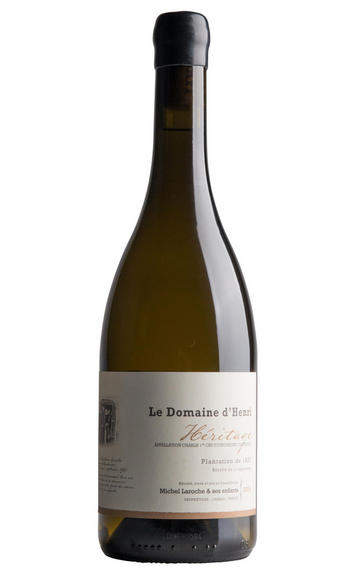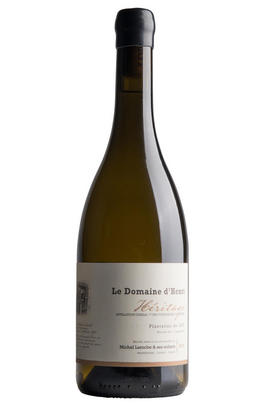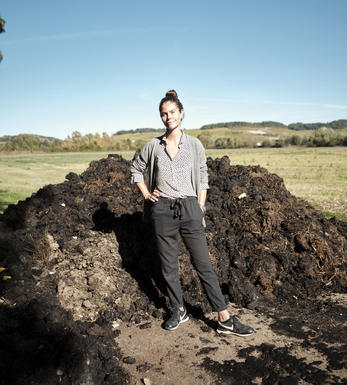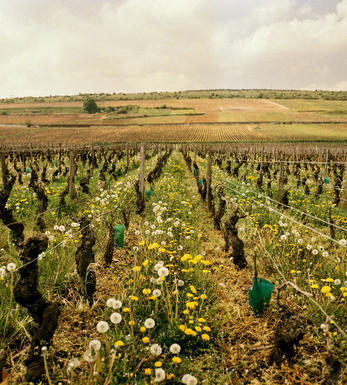
2015 Chablis, Fourchaume, Héritage, 1er Cru, Le Domaine d'Henri

Critics reviews
Neal Martin - 31/08/2017
About this WINE

Le Domaine d'Henri
Ancestors of the Laroche family owned vines in Chablis as long ago as 1695. Today, with Michel Laroche as patriarch, they are among the most respected winemaking dynasties in all of France. Michel has steered a wise yet bold path since his first vintage in 1967. In 2010, he sold the family’s stake in Domaine Laroche in order to establish a new, smaller, quality-oriented domaine, which he would name after his father, Henri. The winery at Domaine d’Henri may have been constructed from scratch, but a significant proportion of the domaine’s holdings is venerable. Of particular note are the 80-year-old vines in the Premier Cru Fourchaume vineyard, which produce the fruit for their Héritage cuvée.
The domaine is currently converting to organic viticulture, while the objective in the winery is to allow each different terroir to express itself. Each parcel is therefore vinified separately, using only natural yeast. Between 10 and 35% of any given wine is aged in barrel depending on the vintage and cuvée – just the right amount to highlight, rather than mask, the startling purity of the domaine’s wines.
Michel’s daughter Margaux, who shares her father’s dynamism, is increasingly responsible for the commercial side of the business.

Chablis Premier Cru
Chablis Premiers Crus are stylish, minerally wines which, typically, are less intense than the Grand Crus but finer and longer-lasting than basic Chablis. They are highly underrated with the better examples outclassing many a good village white Burgundy.
The vineyards cover 750 hectares, scattered across 15 communes on isolated slopes with good exposure. There are 17 principal Premiers Crus but in total 79 vineyards are eligible, with most of the lesser-known ones using a more familiar umbrella name on their label. The best flank the Grands Crus on the north bank of the River Serein, like Montée de Tonnerre (probably the best of all), Fourchaume and Mont de Milieu.
Those just south of Chablis, like Vaillons, Montmains (especially Les Forêts) and Côte de Léchet are also good. With the vineyard area having doubled since the 1970s, quality varies enormously so, as ever, the producer is key.
Styles also vary, with some maturing and fermenting in stainless steel for a purer, more minerally style, while others age and sometimes even ferment their wines in oak for extra complexity. The best examples reach their apogee at eight to 10 years, but are normally enjoyed long before then.
Recommended producers: Jean-Claude Bessin, Billaud-Simon, Séguinot-Bordet, J.-P. & Benoit Droin, Duplessis, Defaix

Chardonnay
Chardonnay is often seen as the king of white wine grapes and one of the most widely planted in the world It is suited to a wide variety of soils, though it excels in soils with a high limestone content as found in Champagne, Chablis, and the Côte D`Or.
Burgundy is Chardonnay's spiritual home and the best White Burgundies are dry, rich, honeyed wines with marvellous poise, elegance and balance. They are unquestionably the finest dry white wines in the world. Chardonnay plays a crucial role in the Champagne blend, providing structure and finesse, and is the sole grape in Blanc de Blancs.
It is quantitatively important in California and Australia, is widely planted in Chile and South Africa, and is the second most widely planted grape in New Zealand. In warm climates Chardonnay has a tendency to develop very high sugar levels during the final stages of ripening and this can occur at the expense of acidity. Late picking is a common problem and can result in blowsy and flabby wines that lack structure and definition.
Recently in the New World, we have seen a move towards more elegant, better- balanced and less oak-driven Chardonnays, and this is to be welcomed.


Buying options
Add to wishlist
Description
These old vines, the last to be picked, are from the end of l'Homme Mort sector, a cooler site which delivers grapes with thick skins and hence great concentration of flavour, especially after a long but very gentle pressing. The 2015 has lovely, fresh, concentrated fruit; a powerful structure with good tannins; and a complex, richly fruited finish. There are multiple layers of flavour, waves of pure white fruit and a few fresh plums too. Drink 2019-2024.
Jasper Morris MW, Wine Buyer
Visiting the domaine during the 2015 harvest, we found Margaux Laroche beaming like a cat with two tails. The storm which had dropped hail over other vineyards had merely provided much needed water for their Fourchaume vines. The grapes badly needed the extra juice which the rains provided, and the extra hang time allowed for them to assimilate the water usefully and then regain their equilibrium behind. The resulting wines are terrific.
wine at a glance
Delivery and quality guarantee